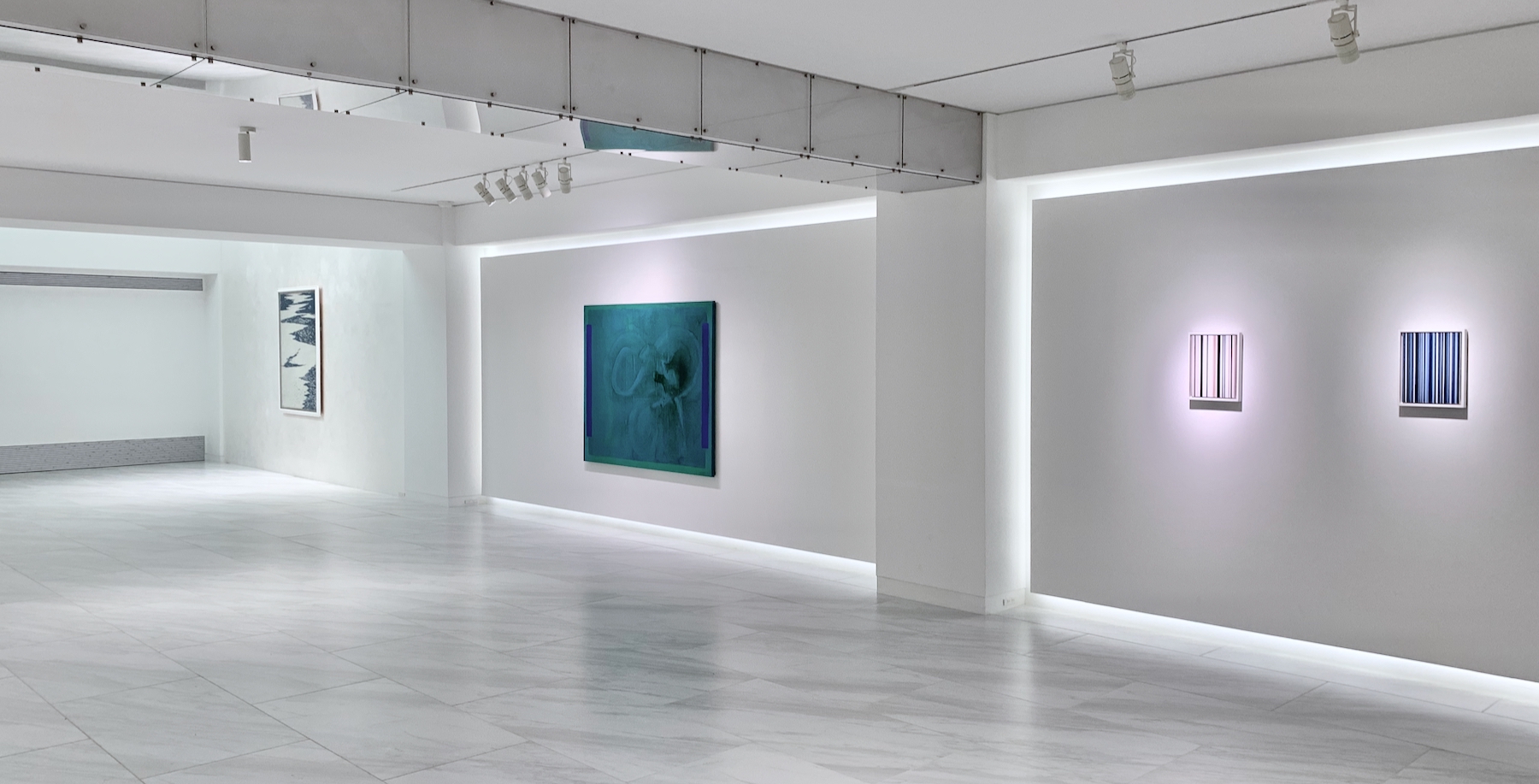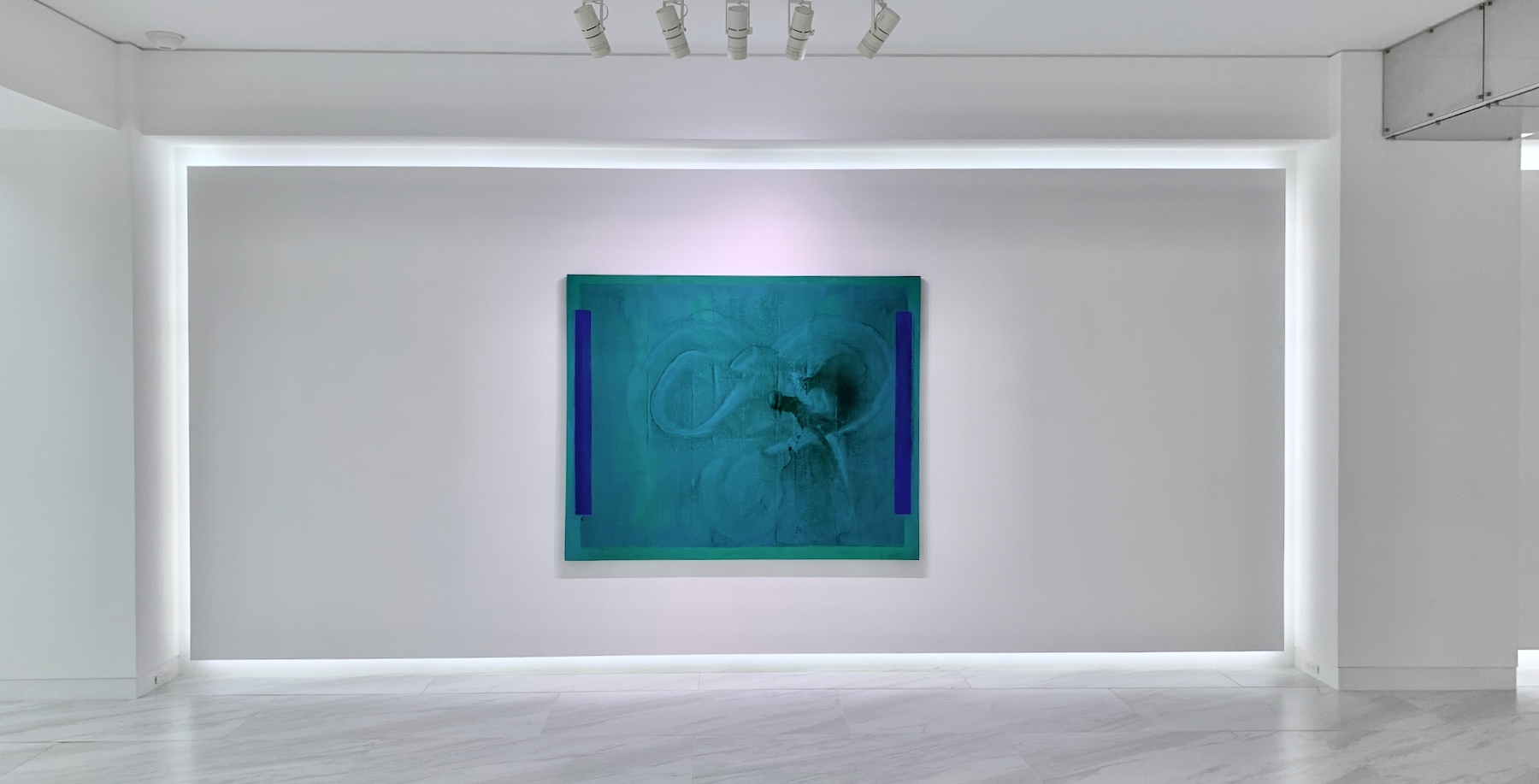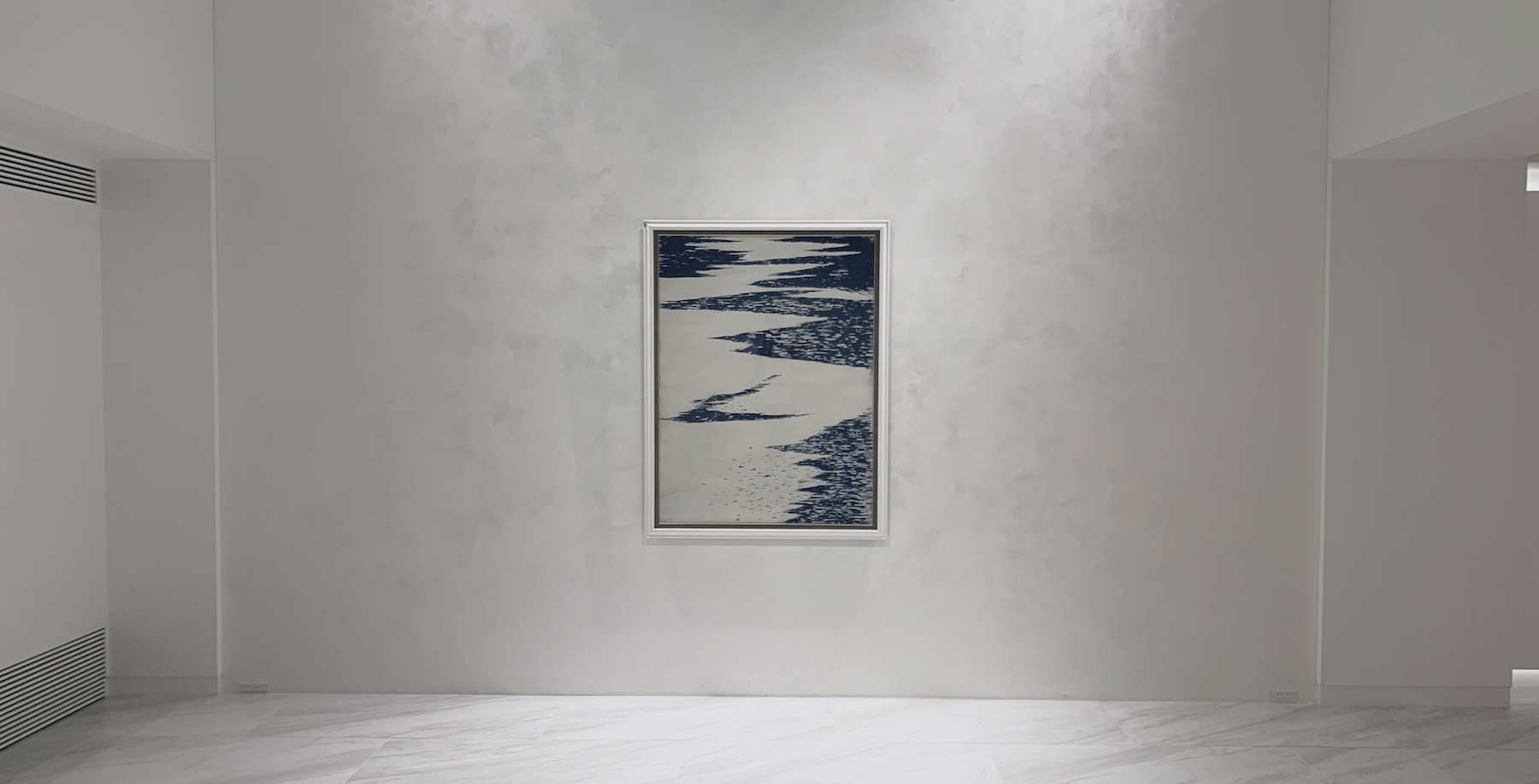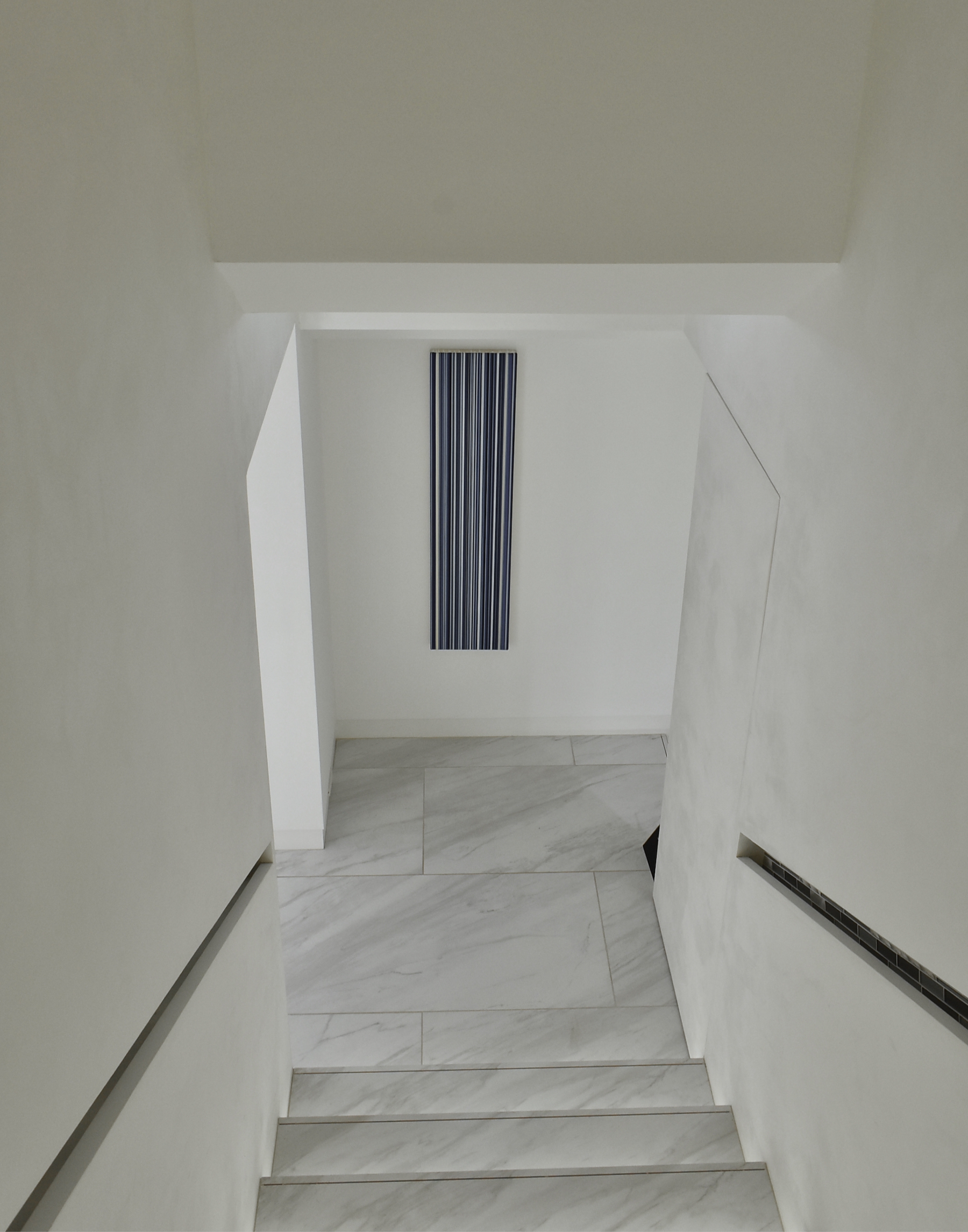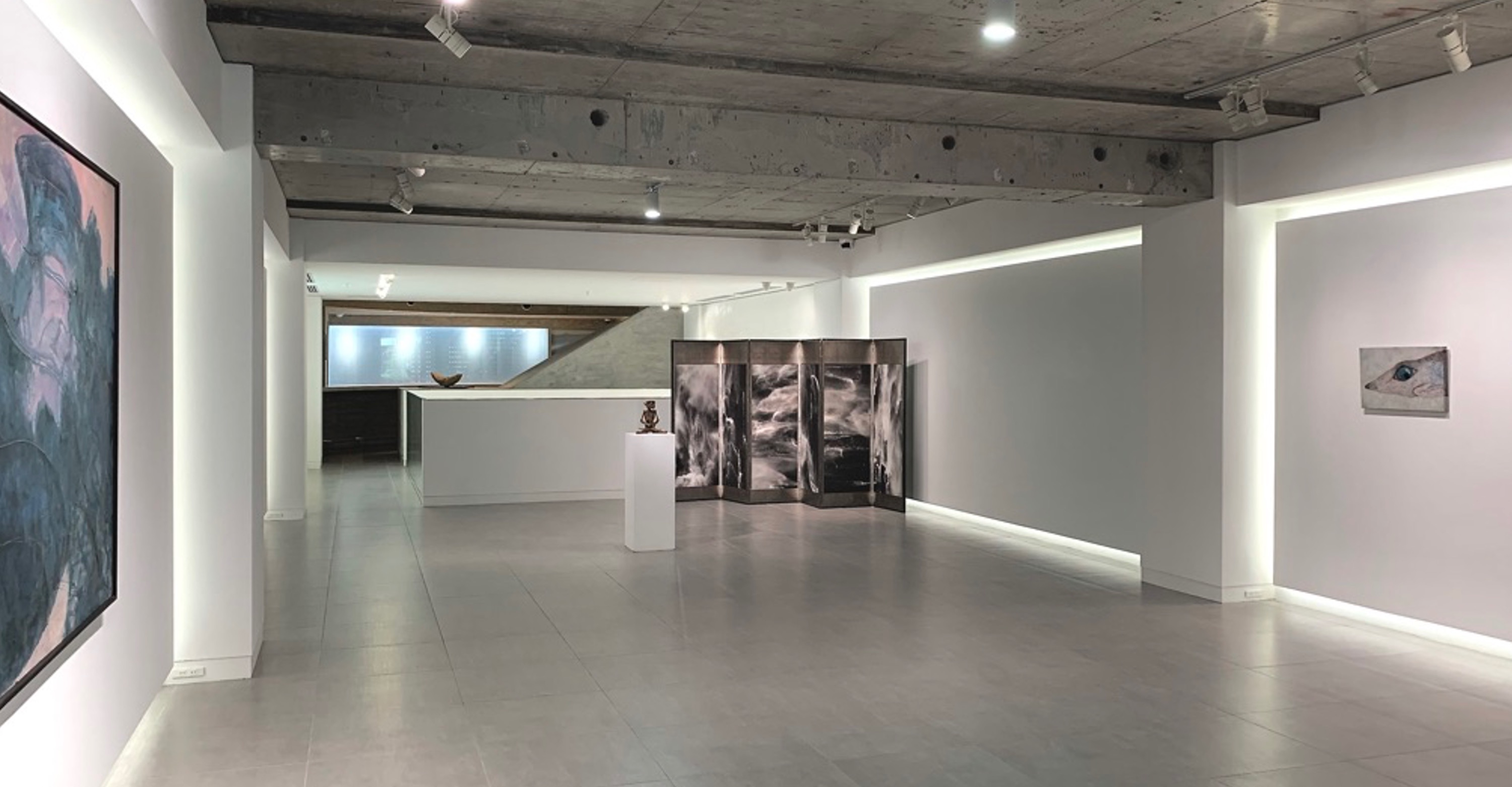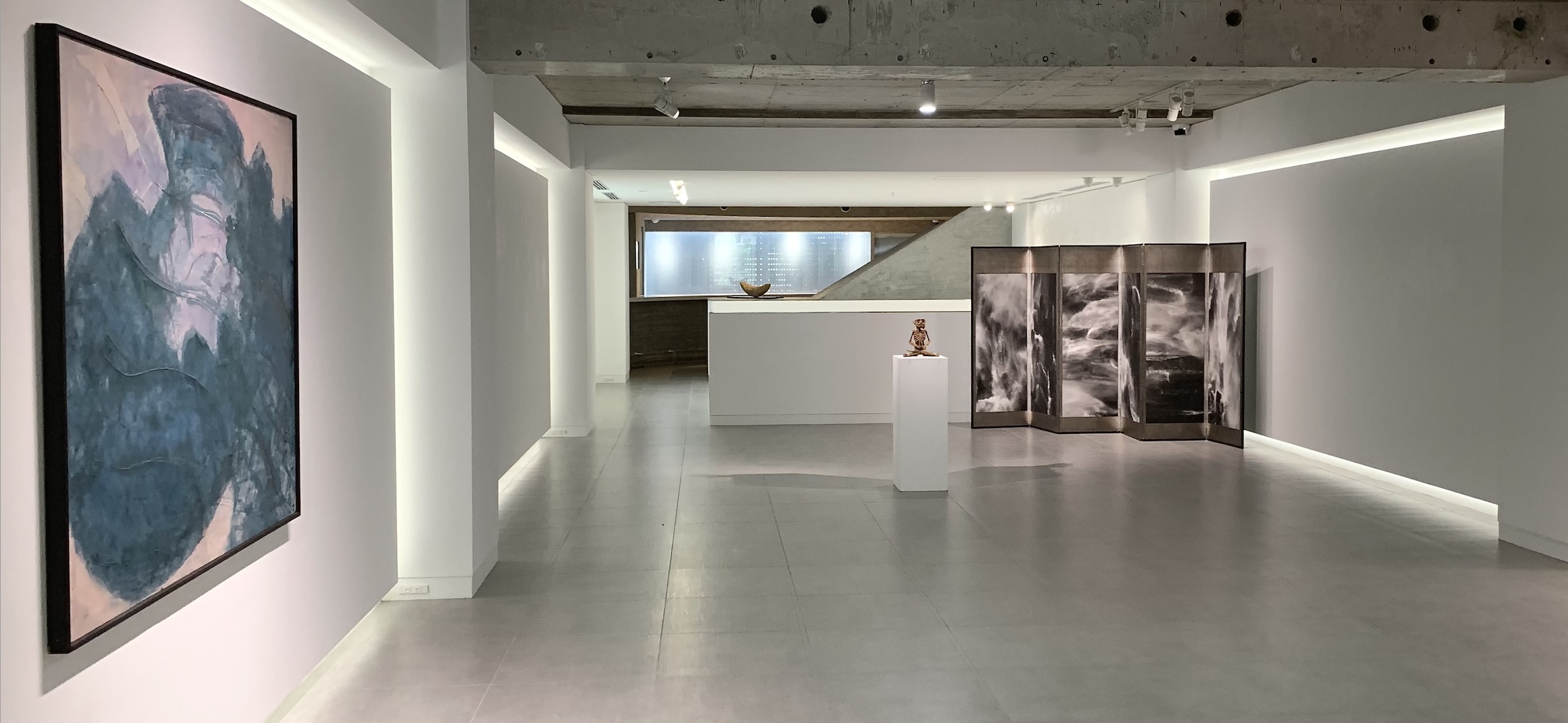
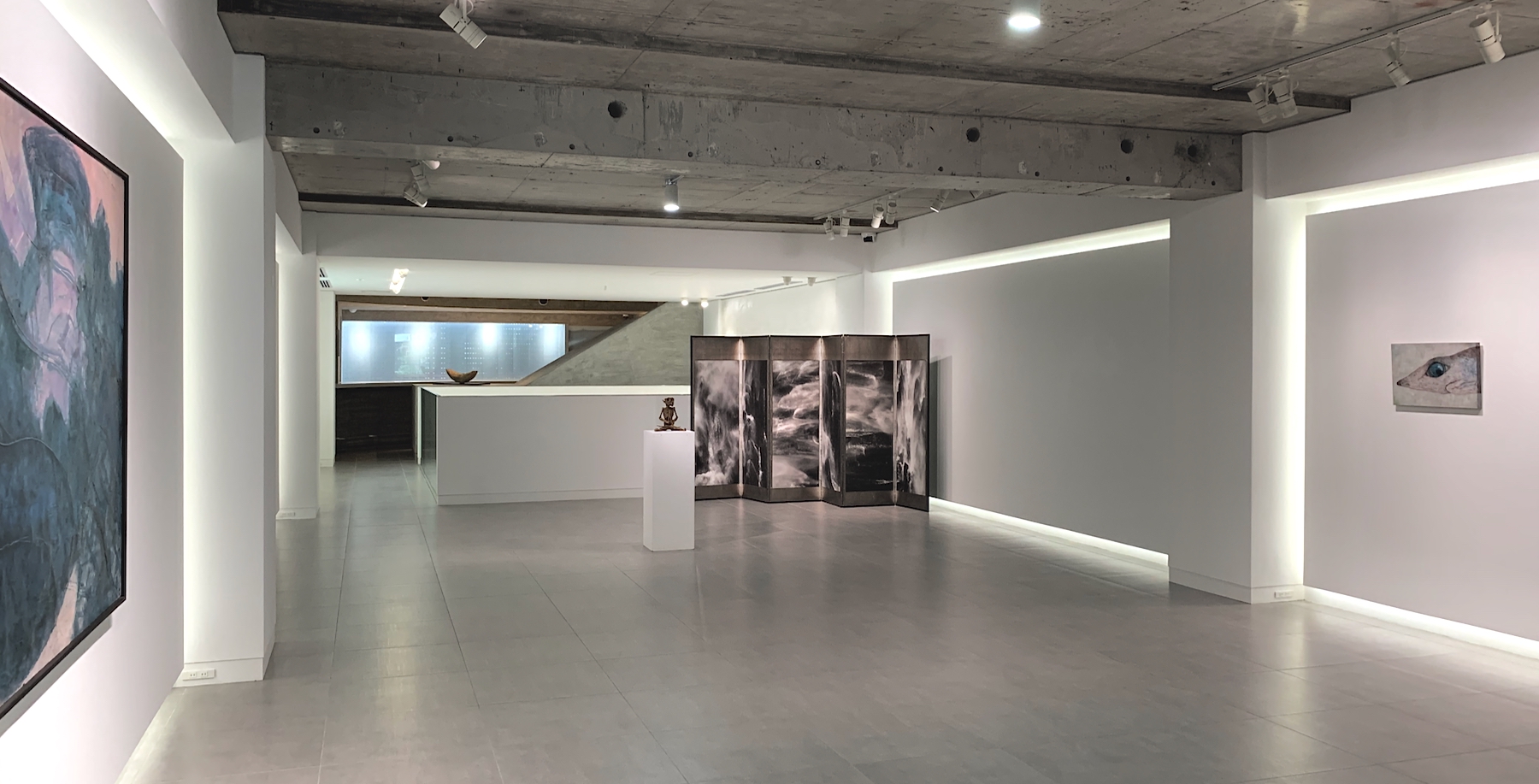
√K Collection Summer 2021
Dates:7.13 tues – 8.20 fri, 2021
*Closed from 8.8 to 8.16 for the summer holidays.
Venue:√K Contemporary
Exhibiting Artists: Soichiro Tomioka, Tadashi Sugimata, Kiyoshi Hamada, Tomohiro Muda, Tadashi Ito, Shiori Horie, Tomoaki Ichikawa, Hajime Emoto, Cornelia Thomsen
IMAGES
-
1F Installation view. (From the left) Soichiro Tomioka, Lake Tagokura (1991), Tadashi Sugimata, Pole c (1982), Cornelia Thomsen, Stripes Nr. 136 (2018) and Stripes Nr. 134 (2018)
-
1F Installation view. Tadashi Sugimata, Pole c (1982)
-
1F Installation view. (From the left) Cornelia Thomsen, Stripes Nr. 136 (2018), Stripes Nr. 134 (2018) and Stripes Nr. 137 (2018)
-
1F Installation view. Kiyoshi Hamada, 30-6-27 (2018)
-
1F Installation view. Soichiro Tomioka, Lake Tagokura (1991)
-
1-2F Installation view. Cornelia Thomsen, Stripes Nr.41 (2012)
-
2F Installation view. Tadashi Ito, Umi no Shizuku Ss-03 (2014)
-
2F Installation view. Tomoaki Ichikawa, Movable Wooden Sculpture / Takeeru-jin (2014)
-
2F Installation view. (From the left) Tadashi Sugimata, Fudou No.5 (1984), Tadashi Ito, Umi no Shizuku Ss-03 (2014), Hajime Emoto, Kappa (2013), Tomohiro Muda, M-07 (2014), Shiori Horie, Longing for Andromeda III (2015)
-
2F Installation view. (From the left) Tomohiro Muda, M-07 (2014), Shiori Horie, Longing for Andromeda III (2015) and Longing for Andromeda I (2014).
-
2F Installation view. (From the left) Tomoaki Ichikawa, The Monster’s Classroom (2014), Tadashi Sugimata, Fudou No.5 (1984)
-
2F Installation view. Tomoaki Ichikawa, The Monster’s Classroom (2014)
ARTISTS
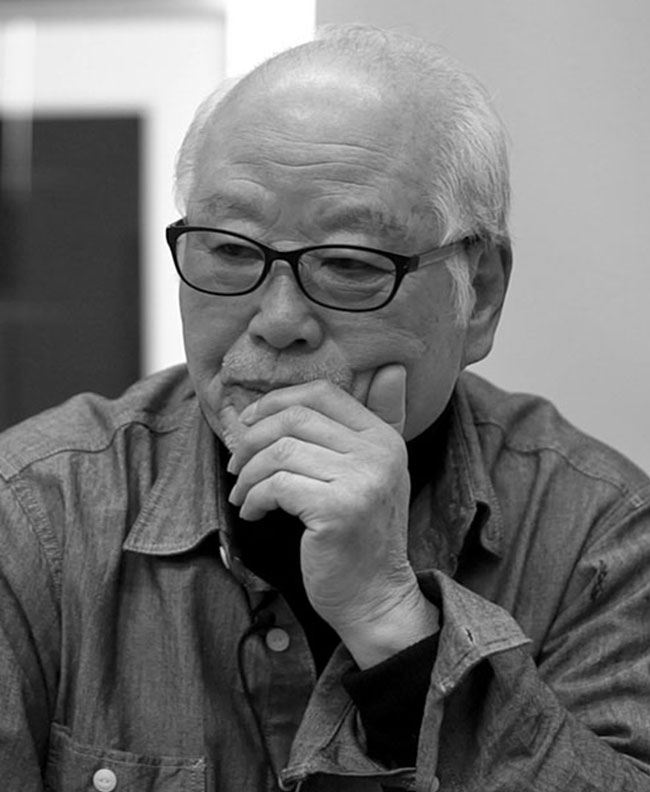
Kiyoshi Hamada (浜田 浄) was born 1937 in Kochi, Japan. Following graduation from Tama Art University in 1961, Hamada became acquainted with the great avant-garde artists of post-war Japan, such as Yoshishige Saito, and began pursing abstract modes of expressions. He was awarded an Honorable Mention at Osaka Biennale of Prints Competition of 1977 and, with much acclaim, has been active in various domestic and international exhibitions. In 2015, his solo exhibition, “The Legacy of Kiyoshi Hamada – Paintings
of Layering and Erasing”, was held at the Nerima Art Museum. Hamada’s works have shown and developed great promise over the years, and his works has been acquired by various museums, such as the National Museum of Modern Art, Tokyo (Japan), Museum of Contemporary Art, Tokyo (Japan), Artizon Museum (Tokyo, Japan) and the Kraków Museum of Art (Poland).
Learn more, here.

Kiyoshi Hamada (浜田 浄) was born 1937 in Kochi, Japan. Following graduation from Tama Art University in 1961, Hamada became acquainted with the great avant-garde artists of post-war Japan, such as Yoshishige Saito, and began pursing abstract modes of expressions. He was awarded an Honorable Mention at Osaka Biennale of Prints Competition of 1977 and, with much acclaim, has been active in various domestic and international exhibitions. In 2015, his solo exhibition, “The Legacy of Kiyoshi Hamada – Paintings
of Layering and Erasing”, was held at the Nerima Art Museum. Hamada’s works have shown and developed great promise over the years, and his works has been acquired by various museums, such as the National Museum of Modern Art, Tokyo (Japan), Museum of Contemporary Art, Tokyo (Japan), Artizon Museum (Tokyo, Japan) and the Kraków Museum of Art (Poland).
Learn more, here.
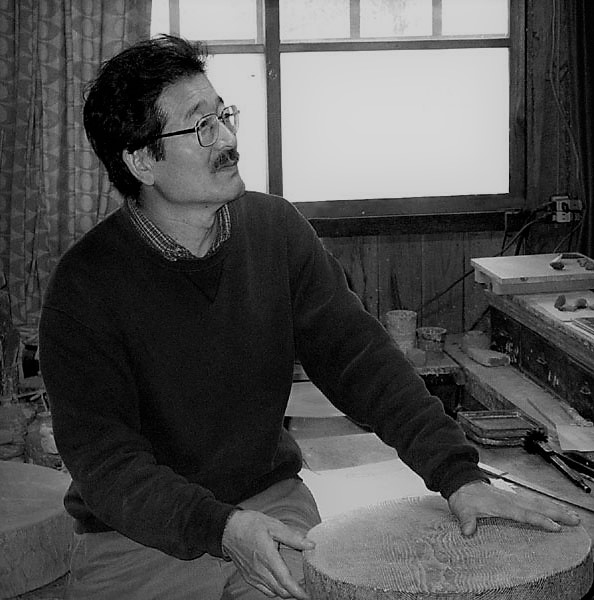
Tadashi Ito (伊藤 正 1952-) is a potter who currently works in Iwate prefecture.⠀
After earning his geology degree in university, Ito eventually returned to his hometown in Iwate and began creating works.
Using his native soil, which he digs with his two hands, his simple and elegant works render a powerful sense of nostalgia. Underlying the timeless aesthetic of his works, Ito’s organic way of production reveals his great affinity for nature.
Nostalgic yet profoundly other, his work possesses a harmonious polarity that grants then a world of their own.
Learn more, here.

Tadashi Ito (伊藤 正 1952-) is a potter who currently works in Iwate prefecture.⠀
After earning his geology degree in university, Ito eventually returned to his hometown in Iwate and began creating works.
Using his native soil, which he digs with his two hands, his simple and elegant works render a powerful sense of nostalgia. Underlying the timeless aesthetic of his works, Ito’s organic way of production reveals his great affinity for nature.
Nostalgic yet profoundly other, his work possesses a harmonious polarity that grants then a world of their own.
Learn more, here.
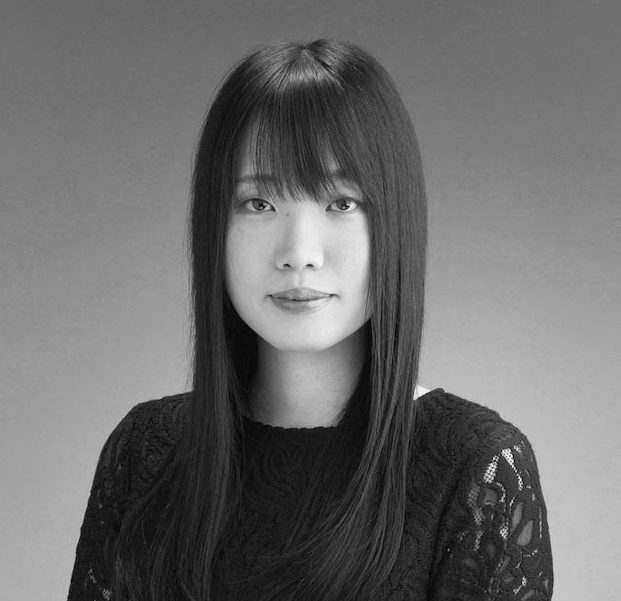
Born 1992, France. Shiori Horie graduated from Tama Art University in 2014 specializing in Nihon-ga painting. In the very same year, Horie held her first solo exhibition in Kashima Arts and exhibited solo in Kashima Arts’ both at Art Fair Tokyo 2015. Horie was nominated for 6th Kaii Higashiyama Memorial Award for Nikkei Nihonga Grand Prize and, for winning the 26th Gotoh Memorial Cultural Award, Horie spent 2016 studying in Paris. She won the 6th Segtagaya Art Award “Hishou” and held a commemorative award exhibition at the Setagaya Art Museum’s Kumin Gallery (Citizens’ Galleries) in March 2021. Her wide oeuvre includes designing the cover and illustrations of Yoko Tawada’s “The Emissary” (Kodansha, 2014), writing and designing the front covers of Heibonsha’s serial literary magazine “Kokoro”, producing photo essays for Shueisha’s “Subaru” and illustrating covers for all five volumes of Jules Verne’s “Voyages Extraordinaires” (INSCRIPT).
Learn more, here.

Born 1992, France. Shiori Horie graduated from Tama Art University in 2014 specializing in Nihon-ga painting. In the very same year, Horie held her first solo exhibition in Kashima Arts and exhibited solo in Kashima Arts’ both at Art Fair Tokyo 2015. Horie was nominated for 6th Kaii Higashiyama Memorial Award for Nikkei Nihonga Grand Prize and, for winning the 26th Gotoh Memorial Cultural Award, Horie spent 2016 studying in Paris. She won the 6th Segtagaya Art Award “Hishou” and held a commemorative award exhibition at the Setagaya Art Museum’s Kumin Gallery (Citizens’ Galleries) in March 2021. Her wide oeuvre includes designing the cover and illustrations of Yoko Tawada’s “The Emissary” (Kodansha, 2014), writing and designing the front covers of Heibonsha’s serial literary magazine “Kokoro”, producing photo essays for Shueisha’s “Subaru” and illustrating covers for all five volumes of Jules Verne’s “Voyages Extraordinaires” (INSCRIPT).
Learn more, here.
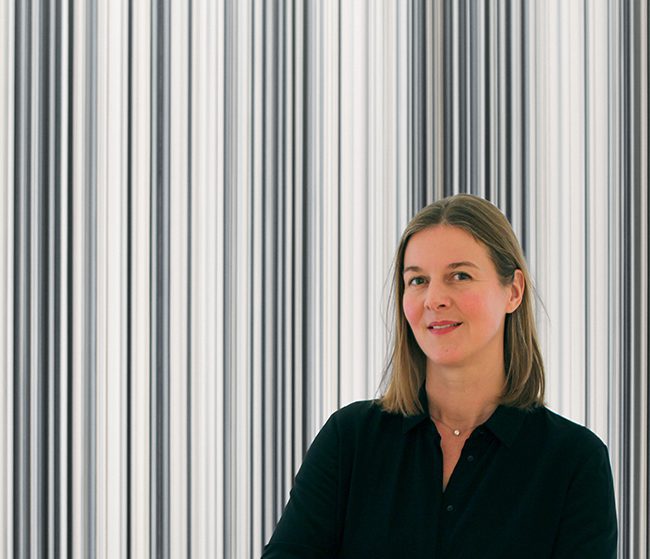
Cornelia Thomsen is a contemporary artist living and working in New York since 2006, best known for her abstract paintings. Cornelia Thomsen began her career in 1990 as an artist at the Meissen Porcelain Manufactory in Meissen near Dresden after a 4-year apprenticeship in the company, where she was trained to paint baroque patterns onto porcelain. In 1994 she moved to Frankfurt where she enrolled in the University of Art and Design in Offenbach/Frankfurt. She turned to abstraction and developed her Stripes painting series in 2008 after a subsequent move to New York.
Learn more, here.
For her website, see: https://www.corneliathomsen.com/about/

Cornelia Thomsen is a contemporary artist living and working in New York since 2006, best known for her abstract paintings. Cornelia Thomsen began her career in 1990 as an artist at the Meissen Porcelain Manufactory in Meissen near Dresden after a 4-year apprenticeship in the company, where she was trained to paint baroque patterns onto porcelain. In 1994 she moved to Frankfurt where she enrolled in the University of Art and Design in Offenbach/Frankfurt. She turned to abstraction and developed her Stripes painting series in 2008 after a subsequent move to New York.
Learn more, here.
For her website, see: https://www.corneliathomsen.com/about/
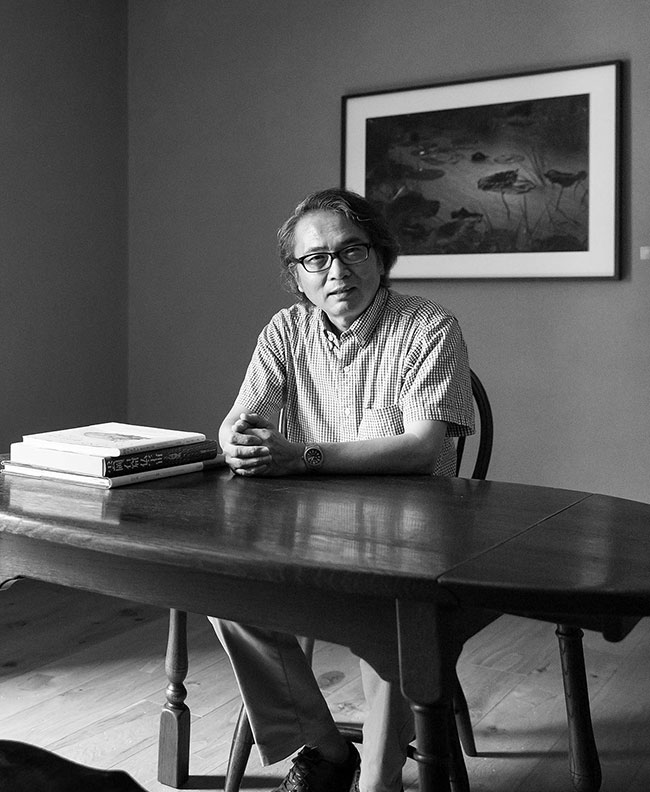
Muda was born 1956 in Nara Prefecture. He graduated from the Department of Education, Waseda University in 1980 and, in 1982, travels to Nepal to stay with and photograph life at the Himalayan Sherpa Village. In 1988, he presented his first solo exhibition, “The Land of Sherpa”. Since then, while exploring “the fundamental relationship between nature and the universe” in his work, Muda has photographed various subjects, from objects to people, landscapes, architecture, roads and stones and has exhibited these photographs in various exhibitions and publications. Muda’s oeuvre further encompasses themes of “prayer” and “time”, photographing Japanese art, such as Buddhist statues, as well as cultural property and antiques, such as Romanesque art and Buddhist archaeological sites in various sites in Asia, such as the Yungang Grottoes and Borobudur. His photographs have been exhibited, both, in Japan and abroad, and published in many photobooks.
Learn more, here.
For the official Tomohiro Muda website, see: www.muda-photo.com

Muda was born 1956 in Nara Prefecture. He graduated from the Department of Education, Waseda University in 1980 and, in 1982, travels to Nepal to stay with and photograph life at the Himalayan Sherpa Village. In 1988, he presented his first solo exhibition, “The Land of Sherpa”. Since then, while exploring “the fundamental relationship between nature and the universe” in his work, Muda has photographed various subjects, from objects to people, landscapes, architecture, roads and stones and has exhibited these photographs in various exhibitions and publications. Muda’s oeuvre further encompasses themes of “prayer” and “time”, photographing Japanese art, such as Buddhist statues, as well as cultural property and antiques, such as Romanesque art and Buddhist archaeological sites in various sites in Asia, such as the Yungang Grottoes and Borobudur. His photographs have been exhibited, both, in Japan and abroad, and published in many photobooks.
Learn more, here.
For the official Tomohiro Muda website, see: www.muda-photo.com
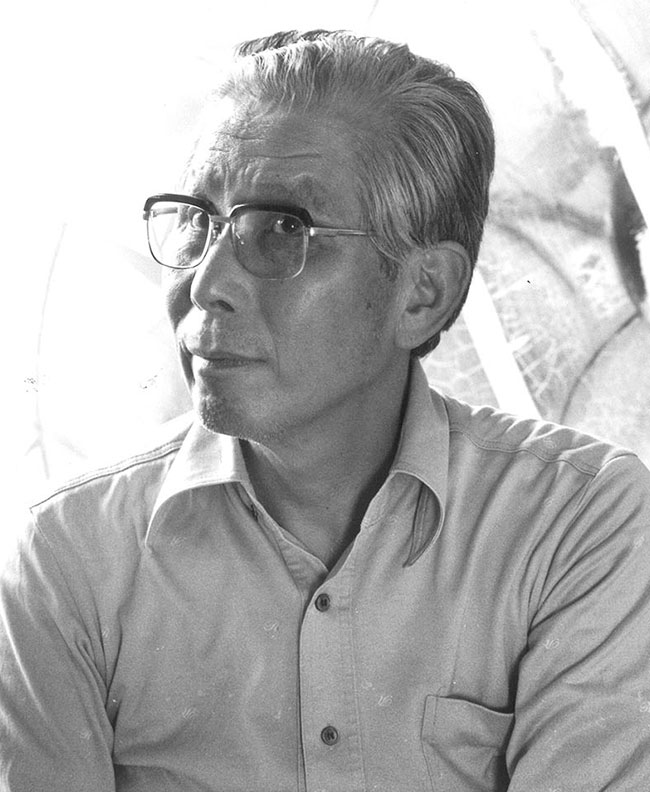
Regarded as one of the most significant artists of the postwar Japanese avant-garde, Tadashi Sugimata (杉全 直) is named in Japanese art history as one of the country’s leading abstract painters of the postwar era.
Born in 1914, Tokyo, the artist grew up in Himeji, Hyogo. He began oil painting in middle school and continued his studies further at the Tokyo Fine Arts School (current Tokyo University of the Arts). Although Sugimata began his career creating surrealist works, through the influence of the Informel movement, his works shifted towards abstract expression His most notable series, which began in the 1960s, was his Kikko (lit: Tortoiseshell) series, which resulted in him winning the Bridgestone Museum of Art Award.
Traversing from figurative art to surrealism, abstraction, 3D art, collage, then back to surrealism, he explored each end of the artistic spectrum during his career. Despite the diversity of his oeuvre, his unrelenting search for perpetual self-innovation remains a constant. In addition, Sugimata was also a beloved and highly influential professor at the Tokyo University of the Arts, as well as Tama Art University, and was awarded the Orders of the Sacred Treasure in 1984. He passed away in 1994.
Learn more, here.

Regarded as one of the most significant artists of the postwar Japanese avant-garde, Tadashi Sugimata (杉全 直) is named in Japanese art history as one of the country’s leading abstract painters of the postwar era.
Born in 1914, Tokyo, the artist grew up in Himeji, Hyogo. He began oil painting in middle school and continued his studies further at the Tokyo Fine Arts School (current Tokyo University of the Arts). Although Sugimata began his career creating surrealist works, through the influence of the Informel movement, his works shifted towards abstract expression His most notable series, which began in the 1960s, was his Kikko (lit: Tortoiseshell) series, which resulted in him winning the Bridgestone Museum of Art Award.
Traversing from figurative art to surrealism, abstraction, 3D art, collage, then back to surrealism, he explored each end of the artistic spectrum during his career. Despite the diversity of his oeuvre, his unrelenting search for perpetual self-innovation remains a constant. In addition, Sugimata was also a beloved and highly influential professor at the Tokyo University of the Arts, as well as Tama Art University, and was awarded the Orders of the Sacred Treasure in 1984. He passed away in 1994.
Learn more, here.
Born 1922, Niigata prefecture, Japan.
In 1953, he became the recipient of the “Shinseisaku” Art Association Award. In 1963, he received the Museum of Modern Art Award at the Sao Paulo Biennale Exhibition and hosted his first solo exhibition in America. He moves to New York in 1965 and held solo shows throughout America. Following his return to Japan in 1972, Tomioka began to paint Japanese landscapes. As he began to paint the local snowscapes of his Niigata hometown, these works formed the beginnings of his iconic “white” paintings. He later received the prestigious Togo Seiji Art Gallery Award in 1984. Thereafter, he continued to paint “white worlds” throughout his career, and his self-developed “Tomioka White” paints are said to never yellow nor peel over time. In 1990, he opened the Tomioka White Museum of Art in Muikamachitown (present-day Minamiuonuma City), Niigata, and built a large collection of works. He passed away May 31, 1994, at 72 years old.
See the Tomioka White Museum website to learn more.
Born 1922, Niigata prefecture, Japan.
In 1953, he became the recipient of the “Shinseisaku” Art Association Award. In 1963, he received the Museum of Modern Art Award at the Sao Paulo Biennale Exhibition and hosted his first solo exhibition in America. He moves to New York in 1965 and held solo shows throughout America. Following his return to Japan in 1972, Tomioka began to paint Japanese landscapes. As he began to paint the local snowscapes of his Niigata hometown, these works formed the beginnings of his iconic “white” paintings. He later received the prestigious Togo Seiji Art Gallery Award in 1984. Thereafter, he continued to paint “white worlds” throughout his career, and his self-developed “Tomioka White” paints are said to never yellow nor peel over time. In 1990, he opened the Tomioka White Museum of Art in Muikamachitown (present-day Minamiuonuma City), Niigata, and built a large collection of works. He passed away May 31, 1994, at 72 years old.
See the Tomioka White Museum website to learn more.
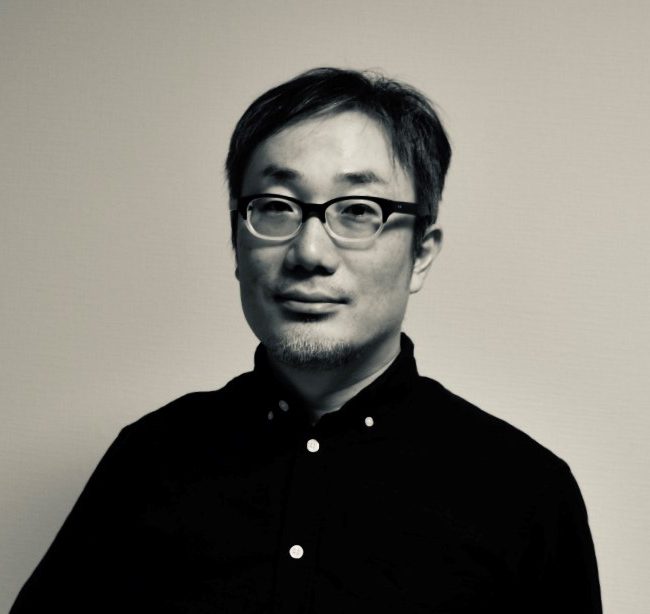
1977: Born in Chiba, Japan.
2002: Graduates with a BA in Oil Painting, at the Tokyo National University of Fine Arts & Music
2004: Graduates with an MA in Oil Painting, at the Tokyo National University of Fine Arts & Music
The multi-talented artist, Tomoaki Ichikawa is best known for his various, original kaijin (monster) and animal character paintings and wooden sculptures. Amongst many solo exhibitions, Ichikawa has illustrated the beloved children’s book series, Oroshite Kudasai and Occult Tantei Yoshida no Jitsuwa Kaidan.

1977: Born in Chiba, Japan.
2002: Graduates with a BA in Oil Painting, at the Tokyo National University of Fine Arts & Music
2004: Graduates with an MA in Oil Painting, at the Tokyo National University of Fine Arts & Music
The multi-talented artist, Tomoaki Ichikawa is best known for his various, original kaijin (monster) and animal character paintings and wooden sculptures. Amongst many solo exhibitions, Ichikawa has illustrated the beloved children’s book series, Oroshite Kudasai and Occult Tantei Yoshida no Jitsuwa Kaidan.
1970: Born in Hyogo prefecture.
While he is now best known for the strange and wonderful “specimen” he models after fictional creatures, Emoto was largely a printmaker throughout the ’90s. Alongside art fairs, he has had several solo and group exhibitions at locations such as Kyoto Art Center (2010), The Museum of Art, Kochi (2011), Toyohashi City Museum Art (2012),
For the Hajime Emoto official website, please click here.
1970: Born in Hyogo prefecture.
While he is now best known for the strange and wonderful “specimen” he models after fictional creatures, Emoto was largely a printmaker throughout the ’90s. Alongside art fairs, he has had several solo and group exhibitions at locations such as Kyoto Art Center (2010), The Museum of Art, Kochi (2011), Toyohashi City Museum Art (2012),
For the Hajime Emoto official website, please click here.


